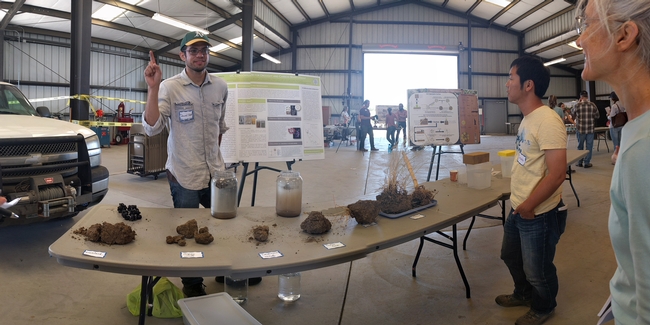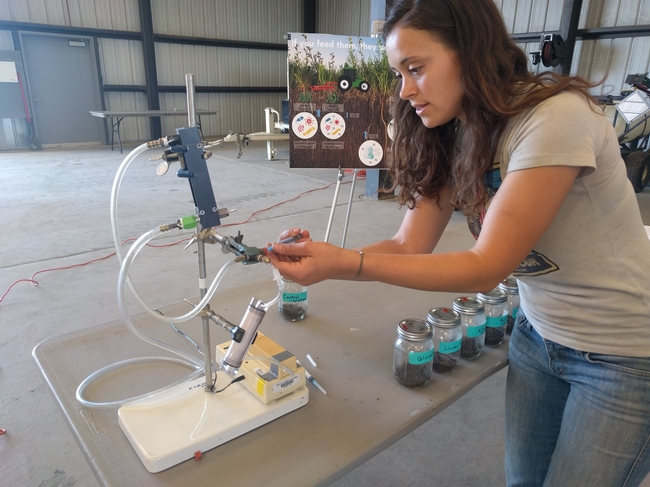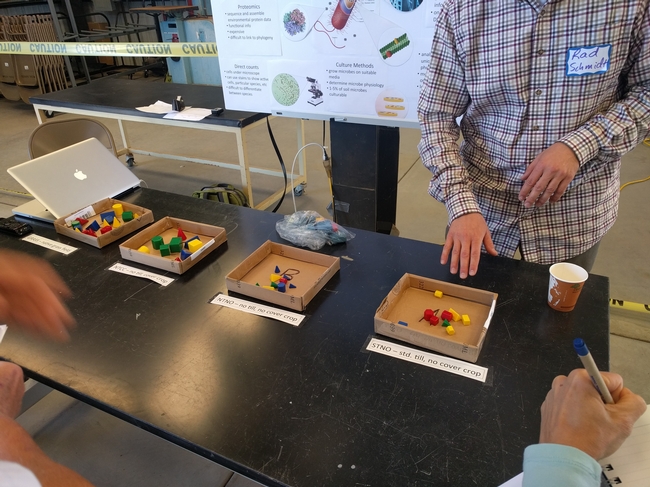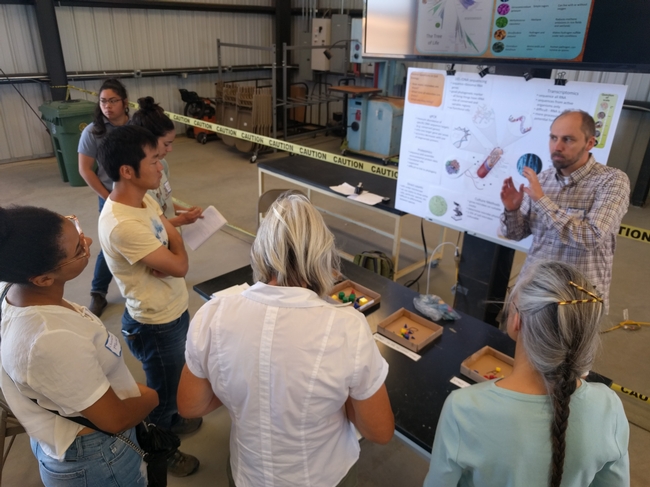Powers of microbes: UC Davis graduate students get creative to teach farmers about soil microbiology
If you grew up in the 1980s or 1990s (or were a child at heart during that era), the famous Powers of Ten film likely left an indelible mark in your mind.
The film starts with a couple lounging on a picnic blanket and zooms out to the outer reaches of the universe, then back in to peer into the microscopic world of the human body: from white blood cells to DNA, and finally down to the proton of a carbon atom.
In its short 9-minute run time, Powers of Ten manages to inflame an existential angst about the size of a single human life while at the same time connecting the viewer to the beauty of the universe and the human body.
As a high school student watching the video, it filled me with the same sense of awe that I felt the first time I heard Carl Sagan's famous quote that “we are all made of star stuff.”
Powers of Ten reminds us that looking at the world from different perspectives, from the very tiny to the immensely large, helps create a better understanding of the natural world, our place within it, and how we can impact it for good.
Had Powers of Ten returned from outer space by zooming into a piece of soil rather than a the human body, it would have explored the billions of living creatures in one handful of soil, slowly scaling down from millipedes to earthworms to ants to nematodes to protozoa, and finally down to the soil's bacteria and fungi that make up the base of the soil food web.
The video might then have looked a lot like the recent workshop at the Russell Ranch Sustainable Agriculture Facility, which served as a science fair for farmers and researchers to learn about the minuscule but powerful soil microbe.
While farmers often have a baseline knowledge about soil microbiology and its importance on the farm, “the science is evolving so quickly at this point, that it can be hard to keep up,” said attendee Margaret Lloyd, UC Cooperative Extension advisor who works with small-scale farmers in Yolo and Sacramento counties.
The workshop coupled foundational principles of soil microbiology with practical on-farm management situations, making the case for farmers to actively consider soil bacteria, fungi, and other micro organisms in their decision-making process.
Jessica Chiartas, a fourth-year graduate student in soil microbiology and one of the workshop organizers, is somewhat of a soil science evangelist.
Her hope was to help workshop attendees better understand that “soils are not just physical, chemical systems. A majority of the processes that take place underfoot are biologically driven. Soils are living and breathing bodies and much like us, they need to be fed, covered, and protected from disturbance” in order to function in the long term.
Scaling down
The scale of microbial activity in soil makes it challenging to help farmers dig into just what scientists are talking about when they talk about microbes.
“It's important to talk about the scale of microbes,” Chiartas said. “So much of what goes on in soils is mediated by microbes and the scale that they operate on is far different than the scale we measure them at. Our typical method of soil sampling and analysis is analogous to harvesting whole fields of crops, chopping them up, throwing them in a heap and then trying to glean information about the individual plants.”
The presenters at the soil health workshop used vivid analogies to translate the abstract results of scientific research and hard-to-imagine scales into concrete, relatable concepts.
A single gram of soil may contain a billion bacteria, and several miles of fungal hyphae, the web-like growth of fungus. Translated into human scale, the numbers are mind boggling.
If a single microbe were a 6-foot-tall person, then a single millimeter of soil would be as tall as the empire state building. A typical soil bacterium contains as many DNA letters in its chromosome as two copies of “War and Peace.” A stack of copies of “War and Peace” equivalent to bacterial DNA from a single teaspoon of soil would be larger than the Great Pyramid of Giza.
A soil information revolution
The metaphors of scale are a fun thought experiment, and they could provide a jumping-off point for a discussion between farmers and scientists essential for improving our current understanding of soil as a living system. Climate change is expected to amplify the effects of soil erosion, compaction, nutrient leaching and other issues common in our current agricultural systems.
“We need improved management that works with the soil ecosystem to increase crop production while enhancing soil health,” said Radomir Schmidt, a postdoctoral researcher and workshop organizer. ”That's going to take a concerted effort and open dialog between farmers, scientists, and citizen scientists to discover, test, and implement these methods in the real world.”
We are now in the era of “soil information revolution," Schmidt said. As our knowledge of the soil microbiome expands, implementing this knowledge in agricultural practice is more and more possible.
This graduate student cohort is well-positioned to make the necessary connections, learning from farmers while helping them zoom in to see the essential lifeforms that impact their farm, then zoom out to help make decisions that are good for the farmer, good for the crop, and good for the microbe.
Farmers in the Davis area will have another opportunity to learn soil health fundamentals at a workshop this fall hosted by the UC Sustainable Agriculture Research and Education Program and Russell Ranch Sustainable Agriculture Facility. Details about the workshop will be posted here.





